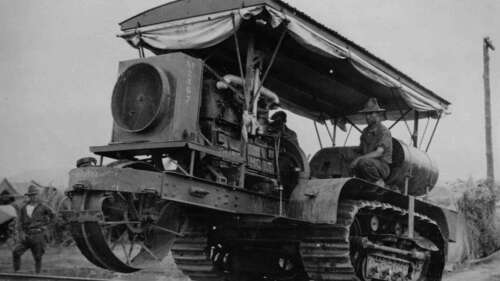
In 1914, shortly before the war broke out, British Army Officer Ernest Dunlop Swinton received a letter from his friend Hugh Marriott. A mining engineer by trade, Marriott would often discuss the latest technological innovations with Swinton, especially those he believed might have a military application.
In that particular letter, Marriott described a “Yankee machine” that he thought might be useful for hauling artillery. “This machine climbs like hell,” Marriott wrote, adding that it is called a “Holt Caterpillar Tractor.” Swinton was intrigued, but his superiors weren’t as impressed. When the war broke out, Swinton floated the idea again, but Minister of the War Herbert Kitchener dismissed it.
Winston Churchill, who at the time served as First Lord of the Admiralty, thought there was something to the concept. He sanctioned the expenditure of £70,000 in Admiralty funds to finance the development of what would later become the tank. Shortly after that, British Mark I tanks debuted on the battlefield.
Holt Caterpillar track-type tractors themselves were used to haul artillery by both British and French troops. This was convenient because they had previously been imported to Europe for commercial use, but additional orders were made during the war.

